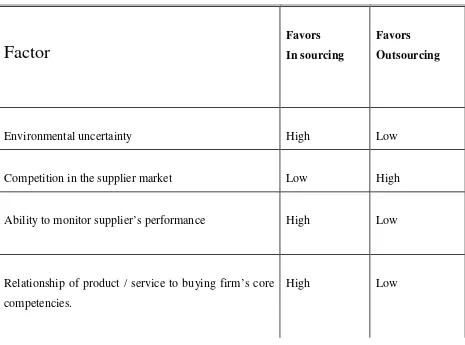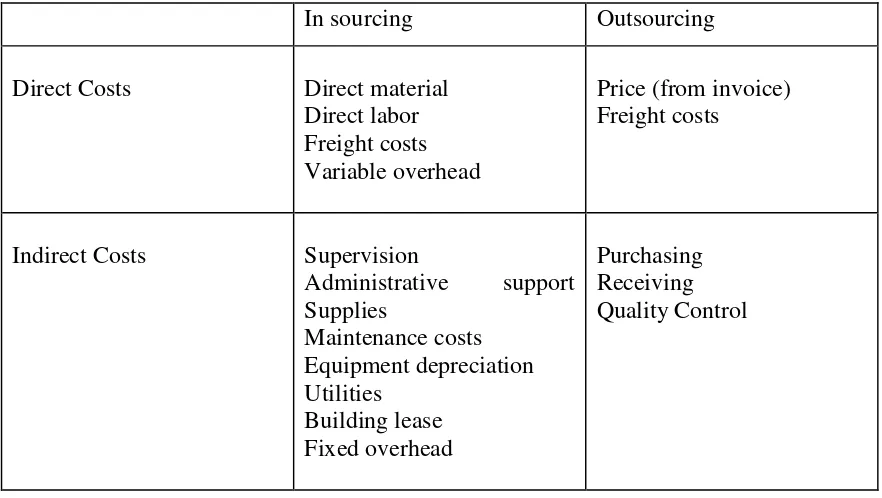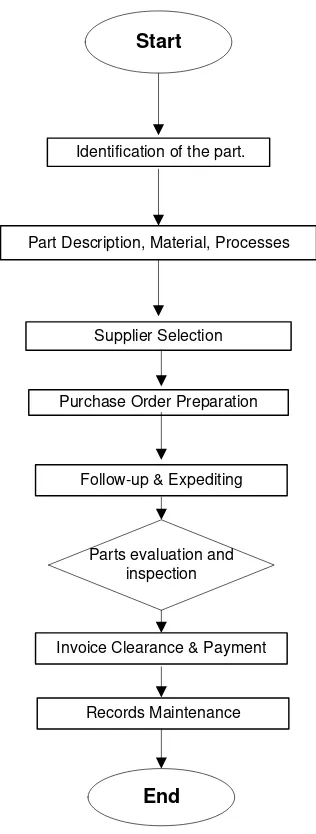UNIVERSITI TEKNIKAL MALAYSIA MELAKA
FEASIBILITY STUDY OF PRODUCT
LOCALIZATION: A CASE STUDY
Thesis submitted in accordance with the requirements of the Universiti Teknikal Malaysia Melaka for the
Bachelor of Engineering Manufacturing (Manufacturing Process)
By
MOHD MAHATHIR BIN HAJI MOHD DAIM
B050310165
DECLARATION
I hereby, declare this thesis entitled
“Feasibility Study Of Product Localization: A Case Study” is the results of my own research except as cited in the reference.
Signature : ……….
Author Name : ………
Date : ………
KUTKM Library (Pind.1/2005)
SULIT
TERHAD
TIDAK TERHAD
(Mengandungi maklumat yang berdarj ah keselamat an at au kepent ingan Malaysia yang t ermakt ub di dalam AKTA RAHSIA RASMI 1972)
(Mengandungi maklumat TERHAD yang t elah dit ent ukan oleh organisasi/ badan di mana penyelidikan dij alankan)
(TANDATANGAN PENULIS)
Alamat Tet ap:
NO 1, JALAN PAHLAWAN, 85300 LABIS, SEGAMAT JOHOR.
* Tesis dimaksudkan sebagai t esis bagi Ij azah Dokt or Falsaf ah dan Sarj ana secara penyelidikan, at au disert asi bagi pengaj ian secara kerj a kursus dan penyelidikan, at au Laporan Proj ek Sarj ana Muda (PSM). ** Jika t esis ini SULIT at au TERHAD, sila lampirkan surat daripada pihak berkuasa/ organisasi berkenaan
BORANG PENGESAHAN STATUS TESIS* UNIVERSITI TEKNIKAL MALAYSIA MELAKA
JUDUL: FEASIBILITY STUDY OF PRODUCT LOCALIZATION: A CASE STUDY
SESI PENGAJIAN: 2/ 2006-2007
Saya _____________________________________________________________________
mengaku membenarkan t esis (PSM/ Sarj ana/ Dokt or Falsaf ah) ini disimpan di Perpust akaan Kolej Universit i Teknikal Kebangsaan Malaysia (KUTKM) dengan syarat -syarat kegunaan sepert i berikut :
1. Tesis adalah hak milik Kolej Universit i Teknikal Kebangsaan Malaysia. 2. Perpust akaan Kolej Universit i Teknikal Kebangsaan Malaysia dibenarkan
membuat salinan unt uk t uj uan pengaj ian sahaj a.
3. Perpust akaan dibenarkan membuat salinan t esis ini sebagai bahan pert ukaran ant ara inst it usi pengaj ian t inggi.
4. **Sila t andakan (√)
MOHD MAHATHIR BIN HAJI MOHD DAIM
√
ABSTRACT
DEDICATION
For my beloved father,
Haji Mohd Daim Bin Supangat
My beloved mother,
Hajah Zubaidah Bte Suraji
My brother,
Mohd Zudaimy
My sisters,
Daizura
Daizeela
ACKNOWLEDGEMENT
In the name of Allah, the Most Merciful and the Most Beneficent. It is with the
deepest senses gratitude of the almighty that gives strength and ability to complete this
project and technical report.
First of all, I would like to dedicate my special thanks to my supervisor, En Nik
Mohd Farid Bin Che Zainal Abidin, En Syahrul Azwan Bin Sundi@Suandi and also
lecturers at Universiti Teknikal Malaysia Melaka because allowed to take me under his
supervision. All of them has given me valuable information and ideas how to perform
this project.
During to complete my project, there are many people give advises in teaching
and guiding to make sure that my project success and fulfill the Faculty needed. Many
things that I never know and learn before, but I got it here. So I like to say thanks to my
supervisor again.
I would also to express my thanks to all the lecturer and technician for their
assistance and guidance advice in developing and producing this work and also an effort
to guide me through this Projek Sarjana Muda (PSM).
Last, but certainly not least, the continual encouragement and support of my
family and not forgotten to all my friends in Universiti Teknikal Malaysia Melaka and
the others who somehow that invite whether directly or indirectly in the completion of
my project. Without their support, dedication kindness and guides, I can’t finish my
TABLE OF CONTENTS
Abstract……… i
Dedication……… ii
Acknowledgement……… .. iii
Table of Contents………. iv
Appendices……… vii
List Of Tables………... viii
List Of Figures……….. ix
List Of Abbreviations, Symbols, Specialized Nomenclature………... x
1. INTRODUCTION 1.1 Introduction………... 1
1.2 Objective of the Project……… 2
1.3 Scope of the Project……….. 2
2. LITERATURE REVIEW
2.1 Introduction……… 4
2.2 The sourcing decision……… 4
2.2.1 Cost Involve On Out Sourcing And In Sourcing……... 6
2.3 Definition Of Outsourcing……….. 7
2.4 Issues Related To Outsourcing……… 8
2.5 Definition Of In Sourcing……… 10
2.6 Issues Related To In Sourcing………. 11
2.7 Advantages And Disadvantages Of………. 13
In Sourcing And Outsourcing 2.8 Stamping Machine……… 18
2.8.1 Introduction……….. 18
2.8.2 Dedicated Dies And Press working……….. 19
2.8.3 Press Select……… 20
2.8.4 General Formula For Press Tonnage………. 22
2.8.5 Metal Stamping Tonnage Calculations………. 23
2.8.6 Industrial Application……… 25
3. METHODOLOGY
3.1 Introduction……… 28
3.2 Process planning……… 28
3.3 Explanation on each process flow………. 30
3.4 Summary……… 33
4. CASE STUDY OF A PRODUCT 4.1 Introduction……… 34
4.2 Companies……….. 34
4.3 Product……… 36
4.4 Description of the product……….. 37
4.5 Selection of the process, machine and material……….. 39
4.5.1 Process Flow………... 39
4.5.2 Machines Involves……….. 40
4.5.3 Bill Of Material………... 41
4.6 Parts Drawings………. 42
4.7 Process Flow For Each Metal Parts………. 44
5. RESULT
5.1 Introduction………. 45
5.2 Price Of Metal Part (Existing)………. 45
5.3 Price Of Metal Part (Proposal)………. 46
5.4 Parts in Costing Sheet……….. 46
5.5 Analysis……… 50
5.5.1 How To Calculate Each Of The Cost ?... 50
5.6 Summary……… 53
6. DISCUSSION 6.1 Introduction………... 54
6.2 Discussion On Result……… 55
6.3 Summary……….. 57
7. CONCLUSION AND FUTURE RECOMMENDATION 7.1 Conclusion……… 58
7.2 Future Recommendation………... 59
APPENDICES
A Gant Chart for PSM 1
B Gant Chart for PSM 1
C Flowchart for PSM 1 and PSM 2
D Process Flow EDP
E Metal Part Drawing
F Costing Sheet For Each Part (Existing)
LIST OF TABLES
Page 2.1 Factors That Affect the Decision to In source or Outsource 5
2.2 In sourcing and outsourcing costs 6
2.3 Advantages and disadvantages of In sourcing and Outsourcing 13
4.1 Bill of Material 40
4.2 Parts Drawing And Description 42
5.1 Total price of all part per product (Existing) 45 5.2 Total price of all part per product (Proposal) 46
5.3 Summary Part 47
5.4 Purchase Cost 47
5.5 Process Cost 48
5.6 Amortization Cost 48
5.7 Notes 49
LIST OF FIGURES
Page
2.1 The outsourcing process 9
2.2 The in sourcing process 12
2.3 The advantage of outsourcing 16
2.4 The disadvantage of outsourcing 17
2.5 Progressive die and explanation. 19
2.6 Square washer 22
5.1 Process Flow For Support Ground Plate 45
6.1 Bar chart shows the percentage of ROR for EDP (metal parts) 57
LIST OF ABBREVIATIONS, SYMBOLS, SPECIALIZED
NOMENCLATURE
BOM - Bill Of Material eg - Example
EDP - External Distribution Point. In - Inch
KMH - Kemilau Mega Holdings Sdn. Bhd. lb - pound
mm - Milimeter
psi - pressure square per inch RM - Ringgit Malaysia ROR - Rate Of Return vs - Versus
CHAPTER 1
INTRODUCTION
1.0 INTRODUCTION
Modifying foreign-made products/services to render them suitable for Japanese users is called "localization". This is an essential part of your success in the Japanese market. Localization refers to the adaptation of a product, application or document content to meet the language, cultural and other requirements of a specific target market (a "locale").Localization is sometimes written as "l10n", where 10 is the number of letters between 'l' and 'n'.
Often thought of only as a synonym for translation of the user interface and documentation, localization is often a substantially more complex issue. It can entail customization related to:
1. Numeric, date and time formats 2. Use of currency
3. Keyboard usage 4. Collation and sorting 5. Symbols, icons and colors
6. Text and graphics containing references to objects, actions or ideas which, in a given culture, may be subject to misinterpretation or viewed as insensitive. 7. Varying legal requirements
Localization may even necessitate a comprehensive rethinking of logic, visual design, or presentation if the way of doing business (eg., accounting) or the accepted paradigm for learning (eg., focus on individual vs. group) in a given locale differs substantially from the originating culture.
1.1 OBJECTIVES OF THE PROJECT
a) Set up the criteria and understand the meaning of costing processes
in manufacturing.
b) Identify the suitable part to produce for the company in the term of cost.
c) Describe the differences cost between in house and out house.
d) Distinguish between the various units used to determine which part
to be made in house.
1.2 SCOPE OF THE PROJECT
a) Study the definition of manufacturing costing processes. b) Study on the manufacturing costing method.
c) Study on the metal part costing of the part product.
d) Analysis on the metal part of the part product to be produce in house in term of process cost only.
e) Choosing the suitable costing method that can be related to metal part processes.
1.3 BACKGROUND PROBLEM
CHAPTER 2
LITERATURE REVIEW
2.1.INTRODUCTION.
The literature review is discussing about research which had been made previously. It also discussed the points which related to this project. The objective of the literature review is to appreciate and explain in detail about journal read as the guideline for this project research.
2.2. THE SOURCING DECISION
At its most basic level, sourcing decisions address which products and services will be provided in-house (known as in sourcing) and which will be provided by a firm’s supply chain partners (outsourcing). The sourcing decision is also known as the make-or-buy decision.
Table 2.1: Factors That Affect the Decision to In source or Outsource
Environmental uncertainty High Low
Competition in the supplier market Low High
Ability to monitor supplier’s performance High Low
Relationship of product / service to buying firm’s core competencies.
High Low
2.21 COST INVOLVE ON OUT SOURCING AND IN SOURCING.
Ultimately, managers must understand the cost issues associated with in sourcing versus outsourcing. Determining the actual cost of metal parts in EDP is a complicated task requiring both good judgment and the application of sound quantitative techniques. In this section we will first examine the direct and indirect costs managers must consider in making such decisions.
Table 2.2: In sourcing and outsourcing costs
In sourcing Outsourcing
Direct Costs Direct material Direct labor Freight costs Variable overhead
Price (from invoice) Freight costs
Indirect Costs Supervision
Administrative support
EXISTING OPERATION (OUTSOURCING)
2.3 DEFINITION OF OUTSOURCING.
2.4 ISSUES RELATED TO OUTSOURCING.
Outsourcing occurs when a company purchases products or services from an outside supplier, rather than performing the same work within its own facilities, in order to cut costs. The decision to outsource is a major strategic one for most companies, since it involves weighing the potential cost savings against the consequences of a loss in control over the product. Vendors providing outsourcing services into two models:
a. Business Process Outsourcing (BPO).
i. Major resources and assets are transferred from the company to the vendor.
b. Application Service Provider (ASP).
ii. Vendors concentrate on providing selected services for multiple clients.
c. Bill Of Material (BOM) is not update.
The BOM must be checked with the customer to make sure that it is updated. It is to make sure that the correct part is been made and also it can reduce the percentage of reject part.
d. Uses the standard specification for the metal part is higher or lower than expected.
A decision must be made whether the standard specification for the metal part should be raise or not.
e. Updated design.
Identification of the part.
Part Description, Material, Processes
Purchase Order Preparation
Start
Supplier Selection
Parts evaluation and inspection Follow-up & Expediting
Invoice Clearance & Payment
Records Maintenance
End
Figure 2.1: The outsourcing process
PROPOSE OPERATION (IN SOURCING)
2.5 DEFINITION OF IN SOURCING.
In sourcing is the opposite of outsourcing; that is in sourcing (or contracting in) is often defined as the delegation of operations or jobs from production within a business to an internal (but 'stand-alone') entity (such as a subcontractor) that specializes in that operation. In sourcing is a business decision that is often made to maintain control of certain critical production or competencies.


